If these magnificent illustrations drawn in gold, blue and bright red look familiar to you, it’s because many of them have been reprinted in modern-day Haggadahs. Furthermore, you have no doubt had the opportunity to see them at some point on the seder table, situated between the gefilte fish and the second cup of wine. Most of us had Haggadahs at home that contained drawings taken from that ancient and exquisite Haggadah known as the Sarajevo Haggadah, which over the years have become integral symbols of the holiday.
The Sarajevo Haggadah is the most famous Haggadah, and perhaps the most beautiful one, and it has endured for generations. Written on bleached calf skin, its colors have been preserved for hundreds of years thanks to the rare minerals in use at the time. It is a long Haggadah that also includes additional texts – all conveyed through splendid illustrations. The last section contains illustrations relating to Passover customs, as well as a prayer book with liturgical poems and prayers for Passover.
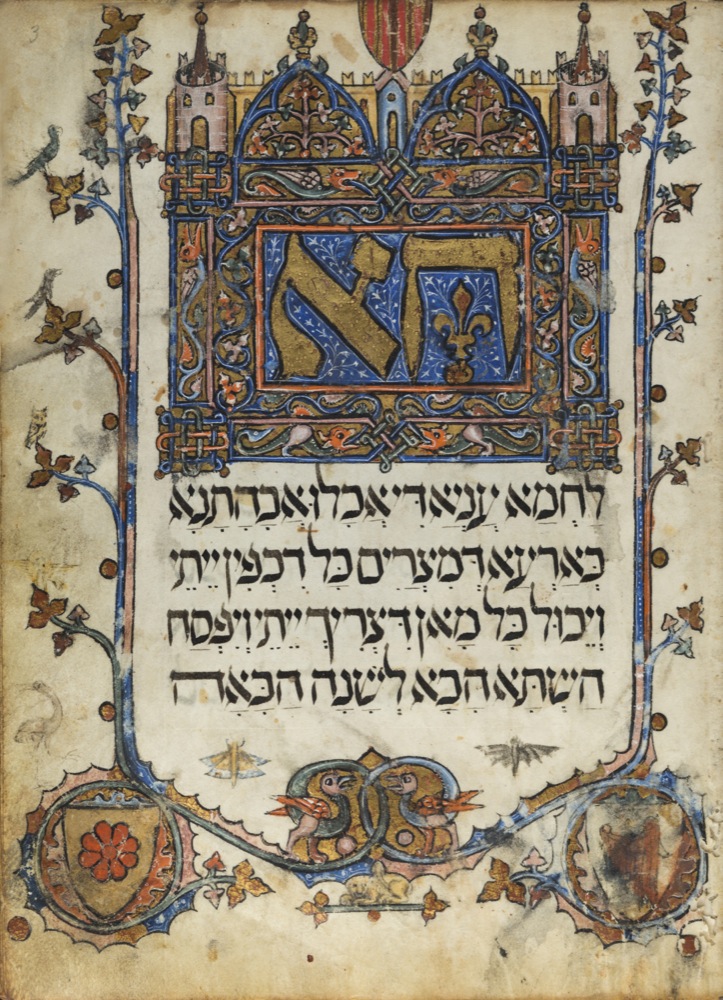
The name of the Haggadah is misleading because it wasn’t produced in Sarajevo, but rather in Barcelona. According to most accounts, this iconic Haggadah was written in 1350 – the middle of the 14th century, at the time of the outbreak of the Black Death bubonic plague in the region. Although many Jews also died during the plague, it led to a rise in antisemitism. Throughout Europe, ugly conspiracies and rumors were spread that blamed the Jews for the plague because they allegedly poisoned the wells. The pogroms of 1391 resulted in the decimation of the Jewish community in Barcelona. Prior to that, the Catalonian city was an important center of religious learning. In addition, the wealthy Jews of Spain commissioned quite a few beautiful Haggadahs like this one.
The Sarajevo Haggadah is just one of those Haggadahs that were produced in Spain during that period. They were used by affluent Jewish families on Passover Eve, and some of them can now be found in different museums around the world. The wine stains on the Sarajevo Haggadah prove that it wasn’t created for the sole purpose of decorating a bookshelf. Rather, people actually read from it at the seder table. Some believe that it was commissioned as a wedding gift for a wealthy young couple in Barcelona.
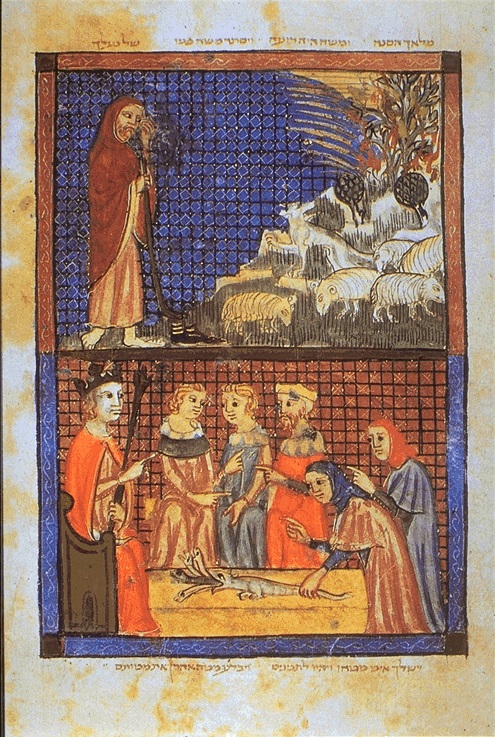
The Sarajevo Haggadah is one of the oldest Sephardic Haggadahs still in existence, and its elaborate illustrations adorn the handwritten text. The style and decorations are reminiscent of some Christian and Muslim illustrations from the Middle Ages. That is because this Haggadah is a remnant of the Golden Age of Spain before the Jews were expelled – a period during which they were reciprocal influences between the religions.
This specific Haggadah was discovered in Sarajevo at the end of the 19th century. Since then, countless books and research studies have been written about it. Scores of reproductions have been made it, as well as facsimile editions. In 1898, the first book dealing with this Haggadah was published in Vienna, Austria. It was the first book on Jewish art that was devoted to a single artifact. That book also gave the Haggadah a name in German. From that time on, it has been called the Sarajevo Haggadah.
As noted above, the Haggadah was produced in Spain, but spent most of its life in Sarajevo, where it still is today – on display under very tight security at the National Museum of Bosnia and Herzegovina. It is considered the most important and most valuable of the three million artifacts that are displayed at the museum. The great interest that it generates cannot be attributed solely to its beauty. Rather, the story of its heroic survival also serves as a symbol of the resilience of the Jewish people as a whole.
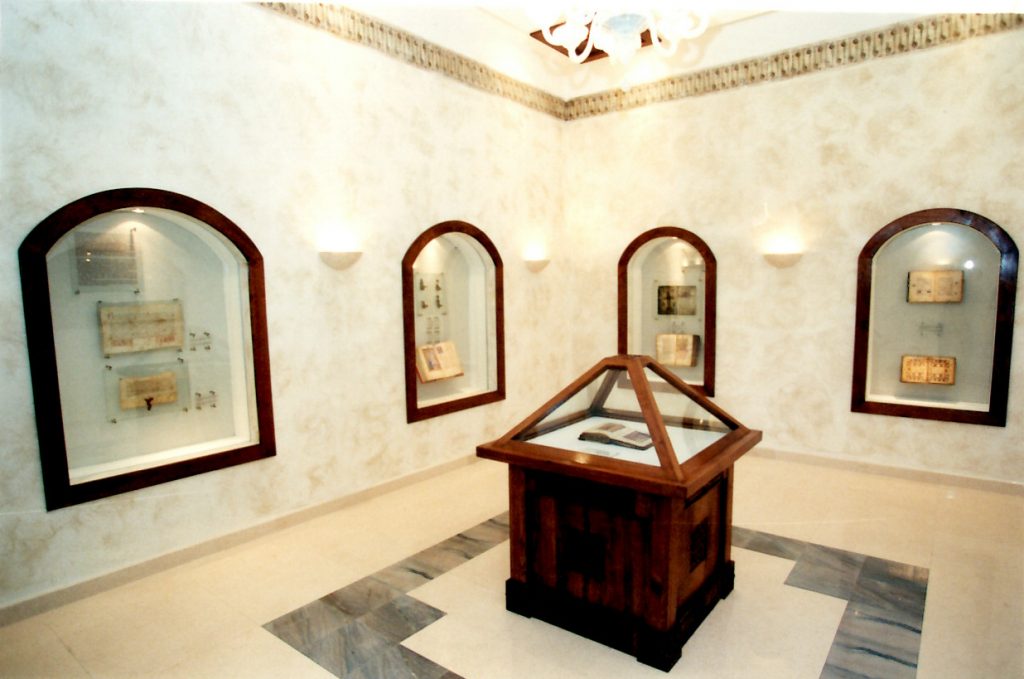
Initially, the Sarajevo Haggadah – before it knew it would be called that – survived the expulsion from Spain. Historians believe that it taken out of Spain during the expulsion, and perhaps even beforehand, and made its way to Italy. The deed written in Hebrew characters, which was found inside the Haggadah, attests to the fact that its owner sold it in Italy in 1510. A signature of approval provided in 1609 by a church censor in Italy named Giovanni Vistorini indicates that the Haggadah was still in Italy one hundred years later, and most likely in Venice. It is not clear when the Haggadah left Italy, but many of the expelled Jews from Spain made their way to Sarajevo via Salonica, which could very well explain how the Haggadah also got to Sarajevo. In 1894, it was sold to the Bosnian National Museum, which had been founded not long before that in Sarajevo while the city was under the rule of the Austro-Hungarian Empire. Since then, the Haggadah has been associated with the city of Sarajevo. But many more perils still awaited the ancient manuscript.
You’ve probably had occasion to hear about Hitler’s heinous plan to establish the “Museum of the Extinct Race” in Prague. Whether such an intention existed or not, the Nazis did confiscate Judaica items and other Jewish property wherever they invaded, including the museum in Sarajevo. They demanded that its director hand over the ancient Haggadah to them. The Christian director of the museum told them that the Haggadah had already been given to another Nazi who got there before them. Darwish Korkut, the museum’s Muslim librarian, risked his own life to rescue it. He took the Haggadah home with him and hid it there. He later found a hiding place inside a mosque located in a village outside Sarajevo. That same librarian and his wife also risked their lives when they hid a Jewish girl in their home during the war.
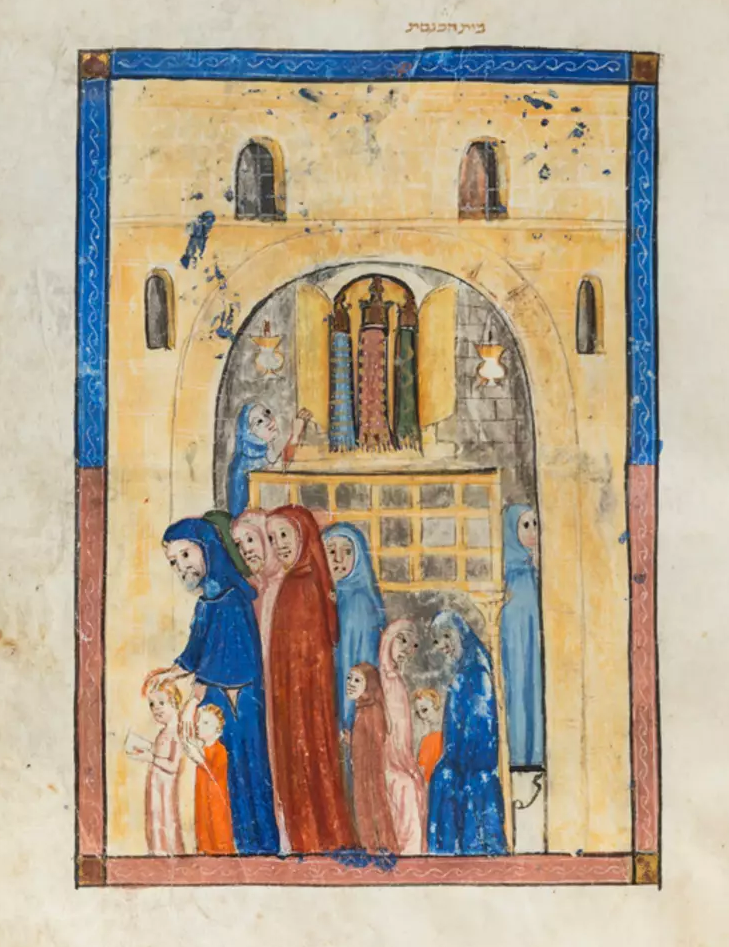
The majority of Sarajevo’s Jews were murdered in the Holocaust. But the ancient Haggadah, which remained hidden throughout World War II, survived and was returned to the National Museum after it ended. But for the Sarajevo Haggadah, this was not its last war.
The Bosnian War broke out in the 1990’s following the disintegration of the Yugoslavian Republic. The museum found itself on the front line during the siege on Sarajevo. Thousands of people were killed in the city, including the museum director at the time, Dr. Rizo Sijaric, who was hit by a hand grenade that was thrown at the museum. Apart from the loss of life, there was other damage as well, such as windows shattered by blasts and looting by thieves. Furthermore, the basement of the museum, where the Haggadah was stored, was flooded by rain – but the ancient Haggadah somehow survived all these disasters. It was later hidden in the safe of the Bosnian Central Bank until the end of the war.
All the hardships experienced by the Haggadah did, however, leave their mark. Once it became clear that the manuscript required urgent restoration, Jakob Finci, the president of the Jewish community in Bosnia, launched a fundraising campaign designed to rescue it. He managed to raise money for the restoration, and at the beginning of the current millennium a special vault was dedicated at the museum, where the Haggadah is on display together with priceless Christian and Muslim documents.
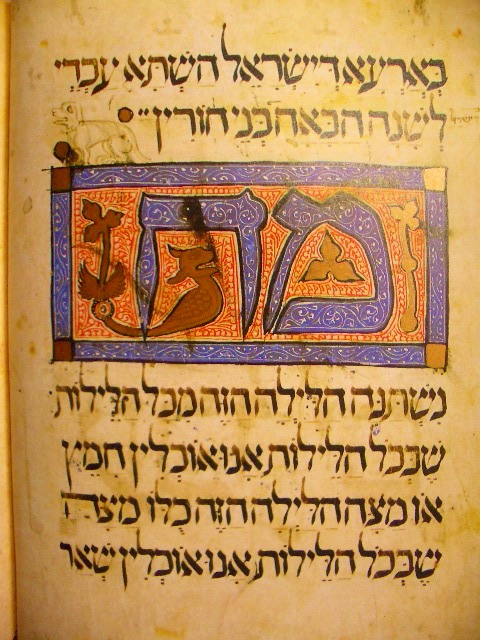
But in recent years, the Sarajevo Haggadah has faced new uncertainties due to the precarious financial situation of the National Museum of Bosnia and Herzegovina, stemming from a shortage of government funding. Nonetheless, the Haggadah has remained at the museum the entire time, even after the Metropolitan Museum of Art in New York offered to borrow it for a few years. It was not, of course, the only museum that wanted to borrow the manuscript (including the Israel Museum). But due to unresolved legal issues between the museum in Sarajevo and the Bosnian and Herzegovinian government, a legal solution has not yet been found which will enable other museums to borrow the Haggadah.
The financial problems continued to get worse, and the National Museum had to close its doors in 2012. The fate of the Haggadah was unclear. Following demonstrations and protests, the museum reopened in 2015. Two years later, and for the first time in over twenty years, the Haggadah was removed from the vault so pictures could be taken of it. This was a rare event because film crews were normally not allowed to photograph the Haggadah outside its protective glass case. A Walla! News team from Israel, headed by Dov Gil-Har, were among the lucky ones to witness the wonder. With a sense of reverence, they documented the removal of the Haggadah by one of the museum employees, who was dressed in a white robe and wore white gloves. Numerous precautions were taken to safeguard the rare artifact that people from all over the world would come to see at the museum.
The interest in the Sarajevo Haggadah has never ceased. Among other things, it has had widespread influence on Jewish art. For example, the painter, Arie Aroch, incorporated direct quotes from it in his work. The famous Haggadah has also had a magical effect on popular culture, including reference to it in Michael Winterbottom’s film, Welcome to Sarajevo. And from a tourism perspective, one could say that it is the “Mona Lisa of Bosnia” because the Haggadah gave rise to a modern-day thriller novel that is considered the Jewish Da Vinci Code.
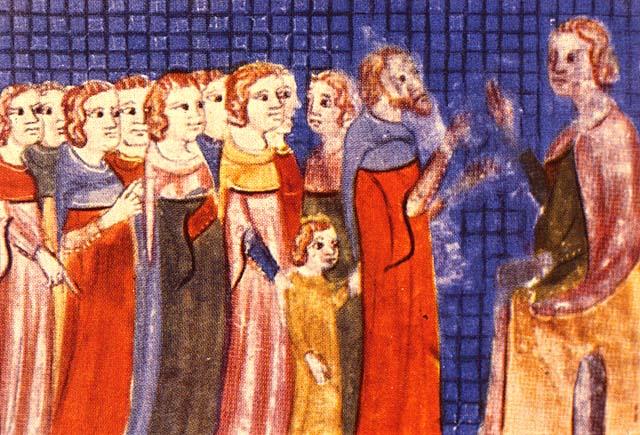
People of the Book, the historical novel by the Australian Pulitzer Prize winner, Geraldine Brooks, focuses primarily on the mystery surrounding the Haggadah’s survival and its harrowing journeys over the centuries. Similar to Dan Brown’s The Da Vinci Cod e, which undoubtedly was in her mind when Brooks did her writing, People of the Book is a thriller novel that became a best seller. And to quote the blurb of the Hebrew edition published by Modan: “People of the Book is based on the true story of the Sarajevo Haggadah, and it revives unforgettable voices from the past in a language and tempo of the 21st century.”
For quite some time now, the Sarajevo Haggadah has been an integral part of the appeal of its adoptive city, where an entire merchandise-based industry has developed around it. The next time you’re in the Balkan Mountains, don’t leave without visiting the National Museum in Bosnia and Herzegovina’s capital city. And don’t forget to bring a miniature copy of the Haggadah from there, or a T-shirt with one of its images printed it on it.